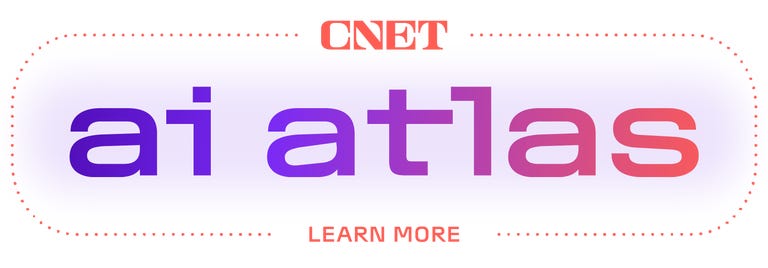Baffled by AI at work? This startup sees a way to change that



Generative AI is increasingly appearing in the workplace, but not all leaders know how to integrate it, and not all employees are confident they can use it. That’s where startup Writer.ai sees an opportunity.
As CIOs try to figure out how to most effectively deploy AI in their organizations, Writer offers ready-made language models and natural language processing technology to speed up the process, empowering employees to write blog posts and sales emails, create answers to frequently asked questions, and generate feature and product descriptions with AI apps, no matter how technical they are.

This will ideally help ease the transition to AI-enabled workflows. A June study from software company Freshworks found that IT employees are the most familiar with AI, followed by marketing and finance. It’s understandable that not everyone is up to speed on AI, given the rapid onslaught of generative AI tools since AI startup OpenAI introduced its generative AI chatbot ChatGPT in 2022.
Companies like Adobe, Amazon, Anthropic, and OpenAI are promoting their own business-specific chatbots, with similar goals. But Writer wants to take chatting out of the equation.
Apps are the new chat
While traditional chatbots work well for individual users, May Habib, CEO of Writer, says these chat-based interfaces aren’t suitable for businesses with many different employees who will inevitably enter different prompts for the same task and get different results.
A spokesperson referred to a broader “over-dataification of AI.”
“When people think of generative AI, they just think of chat, and there’s so much more value you can unlock than just chatwithin a corporate organization,” she said.
But there is still some sort of chat function in the Writer apps.
When you interact with a mainstream chatbot, you first have to “train” it by telling it what you want. Writer’s apps remove that step. So, for example, if you want to generate headlines for blog posts, you can tell a Writer app that you want it to think like an editor, and then you can show it examples of headlines you like and instruct it to create headlines that are concise and attention-grabbing. Once you’ve established the ground rules with the app, you can simply enter details about your article and it will generate headlines without any further chat afterward.
“You are increasingly prescribing more clearly what exactly an end user should give to the generative AI tool and what results that produces,” says Habib.
Ask Writer and AI Studio
San Francisco-based Writer’s customers, which include consulting firm Accenture, financial software company Intuit, beauty brand L’Oreal, digital music service Spotify and ride-hailing platform Uber, can access apps in two ways.
They can use Ask Writer, a ready-made chatbot that the spokesperson describes as “like ChatGPT, but built specifically for businesses.”
It comes with approximately 25 pre-built apps, covering everything from generating transcript summaries to creating sales emails and error reports to performing image analysis.
Customers can also use AI Studio, which enables them to build their own apps using a no-code builder or through APIs, which allow developers to build new applications using Writer technology. They can also use an open-source app development framework, a library of tools and code that developers can also use to build apps.
According to Writer, this allows employees to collaborate on custom apps, regardless of how tech-savvy they are.
“At Writer we say, ‘If you can write it, if you can describe it, you can build it,’” Habib said.
LLMs and RAG
These apps are powered by Writer’s own large language models, the AI models that are trained on massive datasets — though the spokesperson didn’t say what exactly they’re trained on — so they can understand and generate content. LLMs form the basis of mainstream chatbots like OpenAI’s ChatGPT, Google’s Gemini and Anthropic’s Claude.
Estimates from Generation AI Startup Vectara show that common models such as GPT-4o, Llama 3.1 405B and Gemini 1.5 Flash cause hallucinations or generate incorrect or misleading content in 1.3% to 7.4% of cases.
The author argues that this is not good enough for businesses that need consistent, accurate results.
The spokesperson said Writer’s LLMs are ranked based on Stanford’s Holistic Evaluation of Language Models, which rates AI models based on criteria such as accuracy, general information and bias.
In July, Writer added LLMs specifically focused on healthcare and finance.
The healthcare model is trained on patient medical summaries so it can help analyze them to inform clinical decision-making. The financial model is trained on how to rebalance a portfolio so it can do just that for clients.
“If we can work backwards from the use cases that we know customers need, we can train the models very effectively and efficiently,” Habib said.

Writer also has a general model and a vision analysis model. The vision model can analyze images such as diagrams and graphs, but also sketches or handwritten notes.
In addition to these LLMs, Writer offers RAG (retrieval augmented generation), a type of natural language processing for questions.
“When a question is asked, contextually relevant data points are retrieved from a large corpus of uploaded data and passed to LLMs to generate an accurate answer,” Writer said in a blog post.
The spokesperson said that Writer will be able to take all of a company’s data and connect it to the LLM. The startup will let you download files of your own data with up to 10 million words, which it says is about 20,000 pages, to ask questions, do research or generate output.
“The value is in your own organization’s information and data,” she said. “And a lot of the industry has really struggled to create RAG solutions that are accurate enough for an enterprise to use.”
The spokesperson did not provide details about why Writer’s RAG offering is more accurate.
Writer also offers AI security measures to ensure the app doesn’t violate any legal or ethical regulations.
Qordoba to writer
A basic plan starts at $18 per user per month for up to five users. Writer offers custom pricing for business users.
Habib and Writer co-founder and CTO Waseem Alshikh began working together in 2013 on natural language processing, the branch of AI that enables machines to understand human language, and machine translation, which uses AI to translate text from one language to another. In 2015, they founded the AI writing assistant Qordoba.
In 2017 the research article “Attention is all you need“, published by researchers from Google and the University of Toronto, introduced the idea of transformers into machine translation. Transformers are a type of neural network, or machine learning model that works like the human brain, that converts an input into an output by learning context and tracking relationships between words.
Habib and Alshikh decided to move from straight language translation to translating business content into more useful content with this transformer approach. In 2020, they changed the name from Qordoba to Writer and started working on LLMs.
Writer has raised $126 million to date, including $100 million in a Series B round in September.
Investors include venture capital firms Iconiq Growth, Balderton Capital, Insight Partners and Aspect Ventures, investment firm WndrCo and Writer clients Accenture and Vanguard.
“Always plan for more,” Habib said of future funding.




